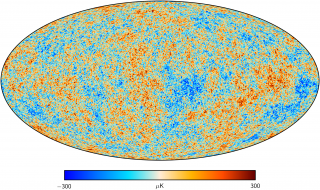Bibcode
Harper, Stuart E.; Barr, Adam; Dickinson, C.; Peel, M. W.; Cepeda-Arroita, Roke; Copley, C. J.; Grumitt, R. D. P.; Leahy, J. Patrick; Jonas, J. L.; Jones, Michael E.; Leech, J.; Pearson, T. J.; Readhead, A. C. S.; Taylor, Angela C.
Referencia bibliográfica
Monthly Notices of the Royal Astronomical Society
Fecha de publicación:
8
2023
Número de citas
8
Número de citas referidas
5
Descripción
The Andromeda galaxy (M 31) is our closest neighbouring spiral galaxy, making it an ideal target for studying the physics of the interstellar medium in a galaxy very similar to our own. Using new observations of M 31 at 4.76 GHz by the C-Band All-Sky Survey (C-BASS), and all available radio data at 1° resolution, we produce the integrated spectrum and put new constraints on the synchrotron spectral index and anomalous microwave emission (AME) from M 31. We use aperture photometry and spectral modelling to fit for the integrated spectrum of M 31, and subtract a comprehensive model of nearby background radio sources. The AME in M 31 is detected at 3σ significance with a peak near 30 GHz and flux density 0.27 ± 0.09 Jy. The synchrotron spectral index of M 31 is flatter than our own Galaxy at α =-0.66 ± 0.03 with no strong evidence of spectral curvature. The emissivity of AME averaged over the total emission from M 31 is lower than typical AME sources in our Galaxy, implying that AME is not uniformly distributed throughout M 31 and instead is likely confined to sub-regions - this will need to be confirmed using future higher resolution observations around 20-30 GHz.
Proyectos relacionados

Anisotropía del Fondo Cósmico de Microondas
El objetivo general de este proyecto es determinar y estudiar las variaciones espaciales y espectrales en la temperatura del Fondo Cósmico de Microondas y en su Polarización en un amplio rango de escalas angulares que van desde pocos minutos de arco hasta varios grados. Las fluctuaciones primordiales en la densidad de materia, que dieron origen a
Rafael
Rebolo López